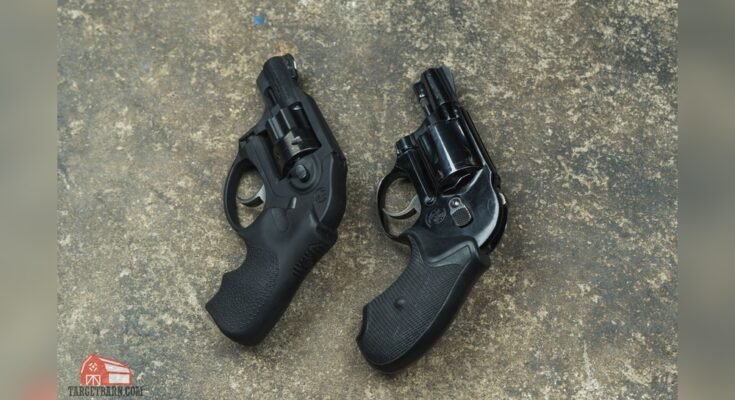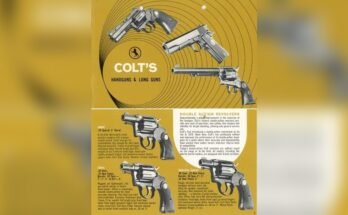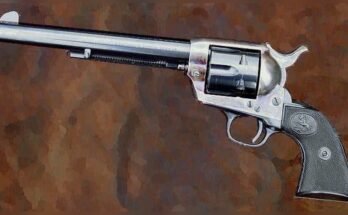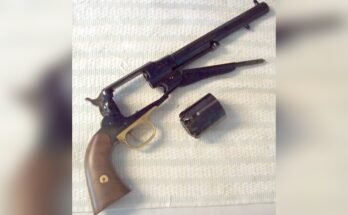If you’re new to revolvers or thinking about adding one to your collection, understanding the difference between shrouded-hammer and hammerless revolvers is key. You might wonder which type suits your needs best, or which feels more comfortable and safe to handle.
This article will clear up the confusion and give you simple, clear answers. By the end, you’ll know exactly how these two styles differ—and which one fits your style and purpose perfectly. Keep reading to make a confident, informed choice for your next revolver.

Shrouded-hammer Revolvers
Shrouded-hammer revolvers stand out with a unique design that protects the hammer. This feature makes them different from traditional revolvers. They offer a balance between safety and quick shooting. Many gun owners prefer them for specific uses.
Design Features
The hammer is partially covered by a metal shroud. This prevents snagging on clothing or holsters. The trigger remains exposed for easy access. The cylinder and frame are similar to classic revolvers. This design keeps the hammer protected but still usable.
Advantages
Shrouded hammers reduce the risk of accidental firing. They allow faster drawing from concealment. The hammer can still be cocked for single-action firing. This provides better accuracy for some shooters. The design helps prevent damage to the hammer during carry.
Common Uses
Many use shrouded-hammer revolvers for concealed carry. They work well for self-defense situations. Some shooters prefer them for hunting small game. Law enforcement officers sometimes choose them for backup weapons. The design suits those who want safety and speed.

Hammerless Revolvers
Hammerless revolvers are a unique type of firearm designed without an external hammer. This design provides a smooth, snag-free profile, making them easier to carry and draw. Many users prefer hammerless revolvers for their simplicity and safety features.
Design Features
Hammerless revolvers have no exposed hammer. The firing mechanism is internal, hidden under the gun’s frame. This reduces the chance of catching on clothing or gear. Most hammerless models use a double-action trigger system. This means pulling the trigger both cocks and releases the firing pin.
Advantages
These revolvers are easy to use and carry. The smooth surface prevents snagging during quick draws. They offer added safety since there is no hammer to accidentally cock. Hammerless revolvers also tend to have fewer moving parts exposed. This can mean less maintenance and fewer malfunctions.
Common Uses
Hammerless revolvers are popular for self-defense and concealed carry. Law enforcement officers sometimes use them as backup weapons. Their compact and smooth design suits close-range encounters. Many find them reliable for everyday carry and personal protection.
Key Mechanical Differences
The key mechanical differences between shrouded-hammer and hammerless revolvers shape how each functions. These differences affect the way shooters handle, operate, and maintain their firearms. Understanding these details helps users choose the right revolver for their needs.
Trigger Mechanism
Shrouded-hammer revolvers have a visible hammer covered by a metal guard. This design protects the hammer but allows it to be manually cocked. Hammerless revolvers hide the hammer completely inside the frame. They rely solely on the trigger to fire, without manual cocking. This changes how the trigger feels and works during shooting.
Safety Aspects
The metal shroud around the hammer reduces accidental snagging on clothes or gear. This makes shrouded-hammer revolvers safer to carry openly. Hammerless revolvers have no exposed hammer, lowering the chance of accidental pulls. Both designs add safety but in different ways based on hammer exposure.
Durability
The shrouded hammer adds extra protection to the hammer, increasing durability. It guards against damage from impacts or drops. Hammerless revolvers, with their enclosed hammer, face less wear from external forces. This can lead to longer life for some parts. Both types are built tough but protect the hammer differently.
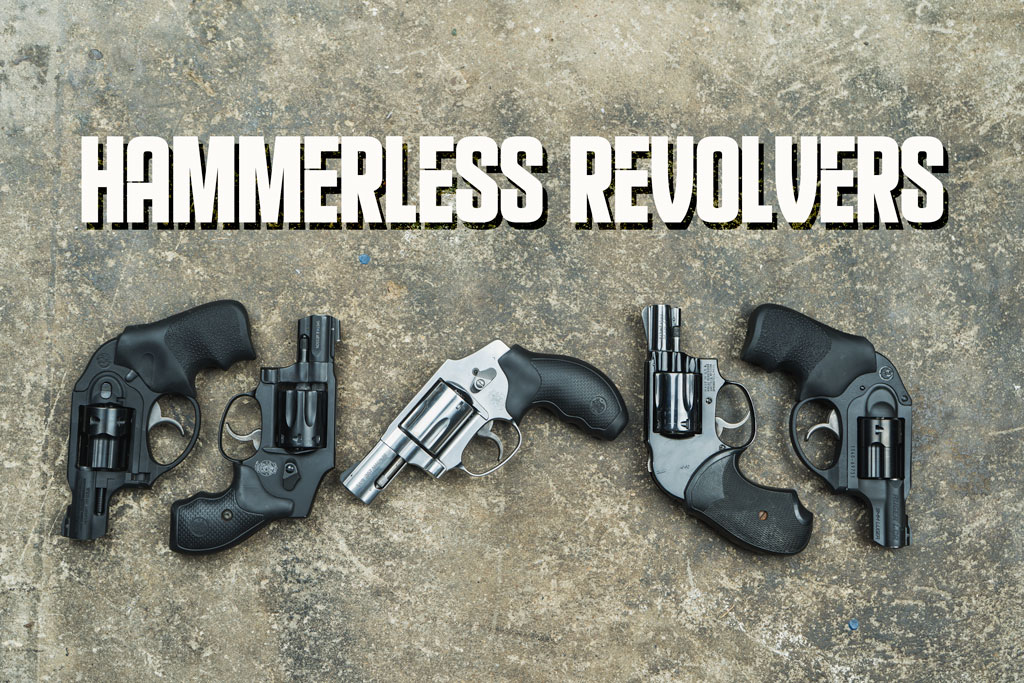
Performance Comparison
Comparing the performance of shrouded-hammer and hammerless revolvers reveals key differences. These differences affect how each type shoots, reloads, and is maintained. Understanding these can help choose the right revolver for specific needs.
Accuracy
Shrouded-hammer revolvers offer better protection to the hammer. This reduces the chance of snagging on clothing. It helps shooters maintain a steady aim. Hammerless revolvers have a smooth top, reducing distractions while aiming. Both types can be accurate, but shrouded-hammer models may feel more secure for steady shooting.
Reloading Speed
Hammerless revolvers usually reload faster. They often feature swing-out cylinders that open quickly. Shrouded-hammer models may have slower reload times due to extra parts around the hammer. Speed matters for self-defense and competition. Hammerless designs tend to save precious seconds during reloads.
Maintenance
Shrouded-hammer revolvers need more care. The hammer shroud traps dirt and debris. Cleaning requires more attention to these areas. Hammerless revolvers have fewer crevices, making cleaning easier. Regular maintenance keeps both types reliable and safe. Simple upkeep suits beginners better.
Choosing Between The Two
Choosing between shrouded-hammer and hammerless revolvers depends on several key factors. Each type offers unique advantages and suits different needs. Understanding these differences helps in making the right choice.
Focus on what matters most to you. Comfort, safety, and style all play a role. Consider how you plan to use the revolver and the laws that may affect your choice.
Personal Preferences
Some shooters like the classic look of a shrouded-hammer revolver. The exposed hammer lets you cock the gun manually for lighter trigger pulls. Others prefer hammerless models for their smooth design and less chance of snagging on clothes. Your comfort with handling each type is important.
Intended Use
Think about how you will use the revolver. For concealed carry, hammerless guns are easier to draw quickly. Shrouded-hammer revolvers work well for target shooting or hunting, where manual cocking helps with accuracy. The choice depends on your daily activities and shooting style.
Legal Considerations
Some regions have specific rules about revolver types. Hammerless models may be preferred in places with strict gun laws. Check local regulations before buying. Knowing the legal limits will keep you safe and compliant.
Frequently Asked Questions
What Is A Shrouded-hammer Revolver?
A shrouded-hammer revolver has a protective cover around the hammer. This design prevents snagging on clothing and improves safety. It is popular for concealed carry and quick draw situations due to its smooth profile.
How Does A Hammerless Revolver Differ?
A hammerless revolver lacks an external hammer spur. It uses an internal hammer mechanism for firing. This design reduces snagging and makes the gun easier to conceal and operate quickly.
Are Shrouded-hammer Revolvers Easier To Conceal?
Yes, shrouded-hammer revolvers have a smoother outline. The hammer cover prevents snagging on clothes. This makes them ideal for concealed carry and quick access.
Do Hammerless Revolvers Affect Shooting Accuracy?
Hammerless revolvers generally maintain similar accuracy to traditional models. The internal hammer design does not impact aim. Accuracy depends more on shooter skill and barrel quality.
Conclusion
Shrouded-hammer and hammerless revolvers serve different needs. Shrouded-hammer models protect the hammer, reducing snag risks. Hammerless revolvers offer a smooth, snag-free design. Both types are reliable for self-defense and sport shooting. Choosing depends on personal comfort and shooting style. Understanding their differences helps make a better choice.
Each has its own strengths and weaknesses. Think about how you plan to use your revolver. The right choice improves safety and shooting experience. Simple and clear—pick what fits you best.
